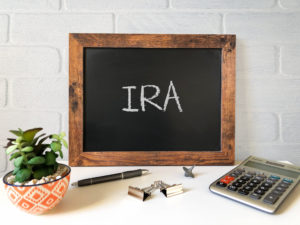
A revocable living trust is a very popular and effective estate planning tool. But consumer protection agencies, like the Wisconsin Bureau of Consumer Protection, caution consumers to be careful shoppers when it comes to establishing a living trust.
What is a Revocable Living Trust?
A trust is a written instrument that designates one or more individuals to manage property for the benefit of others. A trust is revocable if the terms of the instrument allow you to change or terminate the trust during your lifetime, provided that you are competent to do so. A trust is living if you establish it during your lifetime.
There are three parties to a trust. The settlor is the person who creates the trust. The trustee is the person who is designated to manage the trust and its property. The beneficiaries are the individuals who are entitled to receive the income and assets of the trust as directed in the trust instrument. For many people who establish a revocable living trust, they serve all three of these roles during their lifetime and competency. Continue reading

 On December 20, 2019, President Trump signed into law the “Setting Every Community Up for Retirement Enhancement Act” (the SECURE Act). This new law changes how IRAs and certain other retirement benefits must be treated after death. These changes are significant, and they may affect your existing estate plan.
On December 20, 2019, President Trump signed into law the “Setting Every Community Up for Retirement Enhancement Act” (the SECURE Act). This new law changes how IRAs and certain other retirement benefits must be treated after death. These changes are significant, and they may affect your existing estate plan.
 Land Contract
Land Contract When someone dies, the disposition of their personal items, heirlooms and keepsakes are often the greatest source of contention among their surviving family members. However, during their lifetime many people fail to make arrangements to direct how those personal items should be distributed upon their death. Sometimes they make verbal assurances to certain family members during their lifetime, promising to leave them certain items upon death, but those promises are never put into writing. In order to avoid conflicts over the distribution of such items, and possibly avoid a lifetime of hard feelings between surviving relatives, it’s important to properly address these issues in your estate plan.
When someone dies, the disposition of their personal items, heirlooms and keepsakes are often the greatest source of contention among their surviving family members. However, during their lifetime many people fail to make arrangements to direct how those personal items should be distributed upon their death. Sometimes they make verbal assurances to certain family members during their lifetime, promising to leave them certain items upon death, but those promises are never put into writing. In order to avoid conflicts over the distribution of such items, and possibly avoid a lifetime of hard feelings between surviving relatives, it’s important to properly address these issues in your estate plan. As people get older it’s a natural desire to help their children financially, or perhaps make gifts to their grandchildren or other family members. But that generosity may later affect their eligibility for Medicaid benefits if they ever need long-term care.
As people get older it’s a natural desire to help their children financially, or perhaps make gifts to their grandchildren or other family members. But that generosity may later affect their eligibility for Medicaid benefits if they ever need long-term care. Wisconsin’s Rental Weatherization Program has been in effect since 1985. The program was the result of State legislation passed at that time which directed the Department of Safety and Professional Services to develop energy conservation standards for rental properties. If you are a landlord or own a residential rental property in Wisconsin, chances are that you’ve had to deal with the legal requirements of this program. However, due to recent legislation, the program will sunset on January 1, 2018.
Wisconsin’s Rental Weatherization Program has been in effect since 1985. The program was the result of State legislation passed at that time which directed the Department of Safety and Professional Services to develop energy conservation standards for rental properties. If you are a landlord or own a residential rental property in Wisconsin, chances are that you’ve had to deal with the legal requirements of this program. However, due to recent legislation, the program will sunset on January 1, 2018. Real estate prices are up again, and you are considering selling your home. It’s a great home and you feel that you’ve done an admirable job maintaining it, but it does have its flaws and defects. Do you need to disclose these defects to your buyer? In Wisconsin the answer is “Yes”. The law requires persons who transfer real property located in this state to furnish a completed Real Estate Condition Report to the prospective buyer no later than 10 days after accepting a sales contract. Whether you are represented by a realtor or selling your home as a
Real estate prices are up again, and you are considering selling your home. It’s a great home and you feel that you’ve done an admirable job maintaining it, but it does have its flaws and defects. Do you need to disclose these defects to your buyer? In Wisconsin the answer is “Yes”. The law requires persons who transfer real property located in this state to furnish a completed Real Estate Condition Report to the prospective buyer no later than 10 days after accepting a sales contract. Whether you are represented by a realtor or selling your home as a  Wisconsin has become the 37th state to do away with the so-called “Deadman’s Statute” after a November ruling by the State Supreme Court repealed the 158-year-old law. The intent of the statute was to prevent “interested parties”—anyone with a stake in the outcome of estate litigation—from testifying about conversations they had with a deceased or incompetent person.
Wisconsin has become the 37th state to do away with the so-called “Deadman’s Statute” after a November ruling by the State Supreme Court repealed the 158-year-old law. The intent of the statute was to prevent “interested parties”—anyone with a stake in the outcome of estate litigation—from testifying about conversations they had with a deceased or incompetent person. The growing popularity of drones in the U.S. and around the world has regulators, businesses and every day enthusiasts all scrambling to understand what these unmanned vehicles are capable of and the roles they may play in our daily lives. With corporations openly stating their intent to use drones for everything from delivering packages to supplying internet connectivity, and private citizens buying them for recreational use, the law is having a difficult time trying to keep up with these fast-moving devices.
The growing popularity of drones in the U.S. and around the world has regulators, businesses and every day enthusiasts all scrambling to understand what these unmanned vehicles are capable of and the roles they may play in our daily lives. With corporations openly stating their intent to use drones for everything from delivering packages to supplying internet connectivity, and private citizens buying them for recreational use, the law is having a difficult time trying to keep up with these fast-moving devices.